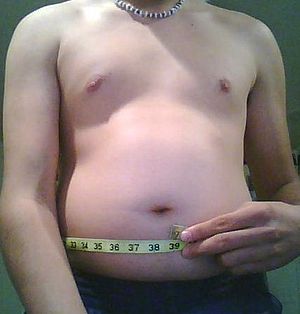 Image by fishy_ via Flickr
Image by fishy_ via Flickr
The popularity of the Atkins, South Beach, and other low-carbohydrate diets has probably led you to believe that carbohydrates are “bad” for you. Just reading the hype in the media would make you think that carbohydrates are the cause of the obesity epidemic throughout the United States.
Eating a lot of easily- digested carbohydrates from white bread, white rice, pastries, sugared sodas, and other highly processed foods may contribute to your weight gain, and therefore, interfere with your efforts to lose weight. On the contrary, consuming whole grains, beans, fruits, vegetables, and other intact carbohydrates promotes good health. As I mentioned before, a healthy diet is about balance and moderation. A basic knowledge of what carbohydrates are and how you body uses them is essential to understanding how to balance them in your diet.
Carbohydrates are essential nutrients that are excellent sources of energy (measured as calories) for your body; they are the preferred fuel for your brain and nervous system. Carbohydrates are found in an array of foods such as bread, beans, milk, popcorn, potatoes, cookies, spaghetti, soft drinks, corn, and desserts. The most common and abundant forms are classified as sugars, fibers, and starches.
The basic building block of every carbohydrate is a sugar molecule, a simple union of carbon, hydrogen, and oxygen. Starches and fibers forms of carbohydrates are essentially chains of sugar molecules, some containing hundreds.
As mentioned above, most carbohydrates come from plant sources and are in the form of sugars, starches, and fibers. Sugars, also called simple carbohydrates, include fruit sugar (fructose), corn or grape sugar (dextrose or glucose), and table sugar (sucrose). Starches, also known as complex carbohydrates, include everything made of three or more linked sugars. Starches include foods such as breads, cereals, grains, pasta, rice, and flour. Fibers are technically classified as a starch because they are complex carbohydrate s that your body cannot breakdown into sugar molecules. Fibers are more abundant in whole grains, legumes, and vegetables.
Your body breaks down all carbohydrates, except for fibers, into single sugar molecules regardless of their source. These simple sugars are further converted into glucose, also known as blood sugar. Your body is designed to use blood sugar as a universal source of fuel for energy.
Fiber is the form of carbohydrate that your body cannot break down into simple sugar molecules. It passes through your body undigested. Fiber comes in two varieties: soluble, which dissolves in water, and insoluble, which does not. Although neither type provides energy for your body, they both promote health in many ways. Soluble fiber binds to fatty substances in your intestines and carries them out as waste, thus lowering your low-density lipoprotein (LDL, or bad cholesterol). It also helps regulate your body’s use of sugars, helping you to keep your hunger and blood sugar in check. Insoluble fiber helps push food through your intestinal tract, promoting regularity and helping to prevent constipation.
Here’s what happens when you eat a food containing carbohydrates. Your digestive system breaks down the digestible ones into sugar, which then enters your blood. As your blood sugar level rises, specials cells in your pancreas churn out insulin, a hormone that signals your cells to absorb the blood sugar for energy or for storage. As your cells soak-up the blood sugar, its level in your bloodstream begins to fall. Now, your pancreas starts making another hormone called glucagon ,which signals your liver to start releasing stored blood sugar. This interplay of insulin and glucagon ensures that cells throughout your body have a steady supply of blood sugar.
Maintaining a steady blood sugar level is a very important component of your diet. While you’ve just seen that your body breaks down all digestible carbohydrates into blood sugar, some are converted into blood sugar faster than others. Thus, some carbohydrates cause a spike in your blood sugar level causing you to feel hungry faster and to crave more sugary foods. Other carbohydrates are converted into blood sugar more slowly, leveling out your blood sugar and resulting in less hunger and food cravings.
In my next installment I'll explain how carbohydrates are rated as to how fast your body converts them into sugar. I'll also show you why most of the carbohydrates you consume should be those that you body converts to sugar more slowly.





















